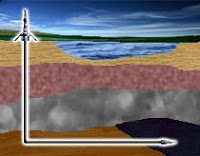A WCTA White Paper: J. Thomas Ranken, Washington Clean Technology Alliance, May 2012. See part 1 here.
What is Natural Gas?
Natural gas is a fossil fuel in gaseous form. It is not renewable, but relative to other fossil fuels, natural gas is cleaner and can be more efficient. It has lower carbon intensity, emitting less CO2 per unit of energy generated than other fossil fuels. It is, however, more difficult to store and transport. When it is delivered to markets via pipeline, a large fraction of the end user cost is in its delivery. Because of this, natural gas markets have traditionally been regional. Newer technologies, such as Liquefied Natural Gas (LNG) are now stimulating global trade.[1]
LNG removes dust, acid gases, helium, water, and heavy hydrocarbons from natural gas to compress it into a liquid that is 1/600 of the volume. It is used primarily as a means of transporting natural gas. Compressed Natural Gas (CNG) is one percent of the original volume and can be used in traditional gas internal combustion engines that have been converted.
Technical Innovations
Much of the increase in natural gas supply is due to two innovations in shale gas recovery: Horizontal drilling and hydraulic fracturing (or fracking). These technological developments have allowed drillers to economically harvest gas that was much more difficult and expensive to obtain in the past. The cost to produce shale gas today ranges from $2 to $3 per thousand cubic feet of gas—less than half of the cost of new conventional gas wells in North America.[2] While these are not new technologies, they have become vastly more cost effective and much more utilized in the past decade.
 Horizontal drilling achieved commercial viability during the late 1980s. Its successful employment, particularly in the Bakken Shale of North Dakota and the Austin Chalk of Texas, encouraged testing of it in many domestic geographic regions and geologic situations. Horizontal drilling is the process of drilling a well that begins vertically or on a slant which then angles to a target location.[3]
Horizontal drilling achieved commercial viability during the late 1980s. Its successful employment, particularly in the Bakken Shale of North Dakota and the Austin Chalk of Texas, encouraged testing of it in many domestic geographic regions and geologic situations. Horizontal drilling is the process of drilling a well that begins vertically or on a slant which then angles to a target location.[3]
Hydraulic fracturing (or fracking) is a technique that was first used at the end of the 1940s. It injects large amounts of water, under high pressure, combined with chemicals and sand, into the shale formation. The quantity, characteristics, and toxicity of the chemicals are disputed. This fragments underground rock, creating pathways for otherwise trapped natural gas (and oil) to find a route and flow through to the well.[4]